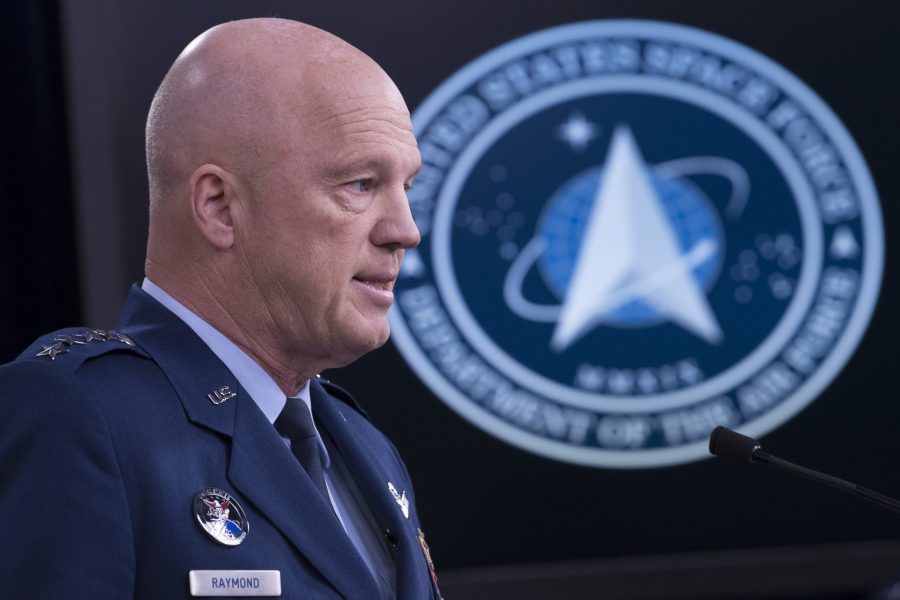If the U.S. Space Force is going to be successful in a domain that makes the Indo-Pacific area of operations look small, speed is key. That’s why Chief of Space Operations Gen. John W. “Jay” Raymond said his service will play a leading role in the Defense Department’s digital transformation.
“If you look at the operations that happen in that domain—whether it’s military operations, commercial operations, civil operations, intelligence operations—those operations happen at a speed that is way faster than anything that happens on the sea, or on the land, or in the air,” Raymond said Oct. 27 during a National Defense University webinar. “We’re talking about objects in space traveling 17,500 miles an hour just to stay in orbit.”
When China blew up its own satellite in 2007, it took just minutes for that missile to go from the ground to low Earth orbit. “And so, you can’t operate in that domain—in a contested space domain—without the tools and capabilities,” such as robotics and artificial intelligence, needed to make decisions in such a high-speed environment.
Speed is also at play in deploying systems. Raymond said autonomy and reusability will give the Space Force a “significant advantage.”
A Pentagon policy paper released earlier this month said the Pentagon must transform into a “digitally savvy military” that is “fueled by groundbreaking technology” to “exploit information.
A Pentagon policy paper released earlier this month said the Pentagon must transform into a “digitally savvy military” that is “fueled by groundbreaking technology” to “exploit information.” Raymond said the Space Force will be “on the front line” of those efforts. It is building a digital headquarters staffed by personnel who are “fluent in digital,” he said, and where digital engineering will be the standard for all acquisitions.
It’s unacceptable to take five or six years to build a “clone” of an existing capability already on orbit, Raymond said. The Space Force must leverage growing commercial space technology and insist on digital engineering from the beginning.
Doctrine must also evolve. Ever since space capabilities were first integrated into the fight during Desert Storm, space has been a way to “make the other domains better,” he said. Now, he says, it must be more.
“If you look at how we’ve integrated, there’s nothing we do as a joint and coalition force today that isn’t enabled by that integration,” Raymond said. “The challenge is that our adversaries have had a front-row seat, and they are developing threats to deny us that advantage. So it’s no longer good enough to just think about space as a benign domain … you have to treat it as a warfighting domain.”
In other words, he said, the Space Force must “look at what else [it] can do besides just making the other domains more effective.”
